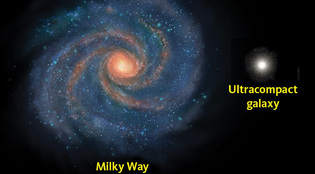 loading
loading
FindingsA long time ago in a galaxy far, far away . . .Scientists discover new galaxies.  NASA, ESA, A. Feild (STScl), and P. Van DokkumView full imageUsing the Hubble Space Telescope and a telescope in Chile trained on a patch of Southern Hemisphere sky, Yale astronomer Pieter van Dokkum and his colleagues have discovered nine ultra-small, ultra-dense, and ultra-unusual galaxies. These objects are so far away that their light has traveled for about 11 billion years, says van Dokkum, so the researchers are seeing a snapshot of what the universe, which began 13.7 billion years ago, looked like in its early days. (The research appeared in the April 10 issue of the Astrophysical Journal Letters.) "It would have been hard then to find a place remotely like what we see at present," he says. Our own Milky Way is more than 20 times bigger than these compact structures because "over time, galaxies have grown and evolved," says van Dokkum. "We don't yet know precisely how galaxies have expanded. Investigating these early ones will give us clues."
The comment period has expired.
|
|